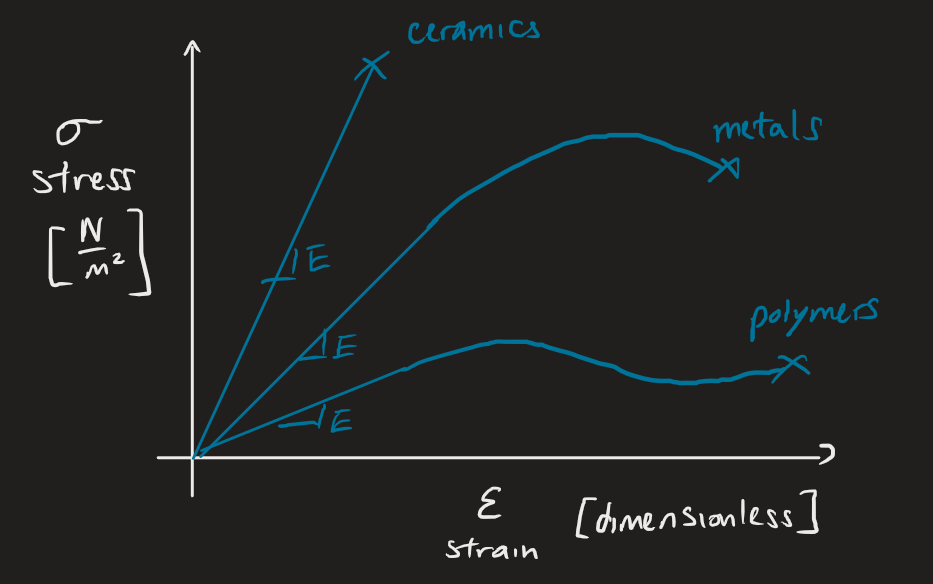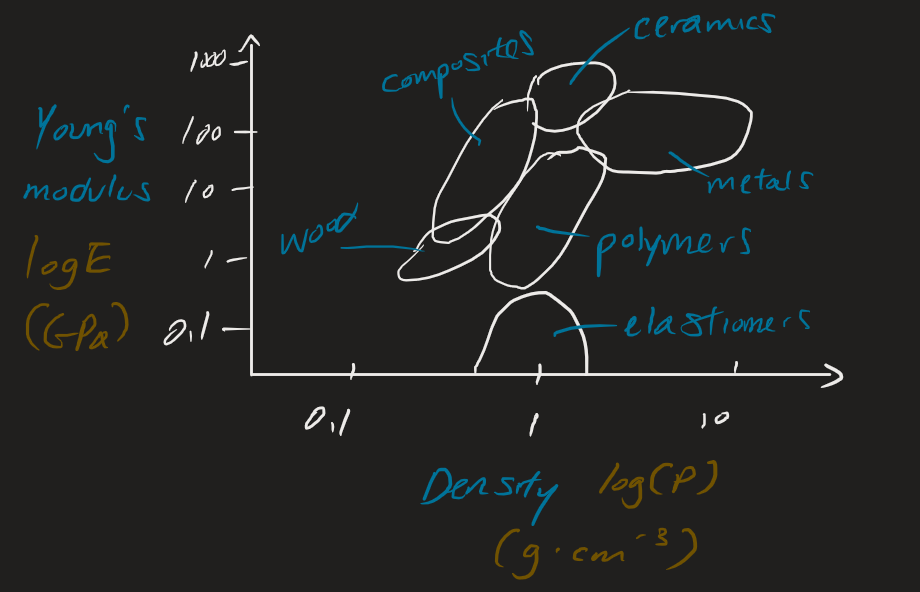The Young’s modulus is a material property, the slope of a plotted stress versus strain curve, typically represented , measured in pascals (usually GPa). A good analogy is stiffness. The Young’s modulus only depends on the type of atoms and not what has been done to the atom, i.e., it is structure-independent and only dependent on the microstructure/arrangement of atoms. What are the implications of this?
- Small changes in composition or concentration won’t change the Young’s modulus
- But! When a material is heated, the Young’s modulus will change because of small changes in the microstructure
So any time a material in a tensile test is unloaded, the Young’s modulus remains the same.
 Note that the Young’s modulus of different materials usually goes:
Note that the Young’s modulus of different materials usually goes:
Ceramics > Metals > Polymers
Active research
Lightweight materials with a high Young’s modulus is an area of current materials research. Composite materials like carbon fibre go slightly into this region.
 In general we can note that a general increase in density corresponds with a higher Young’s modulus.
In general we can note that a general increase in density corresponds with a higher Young’s modulus.